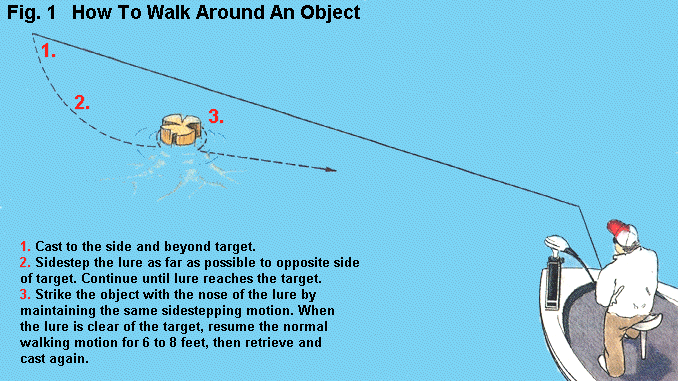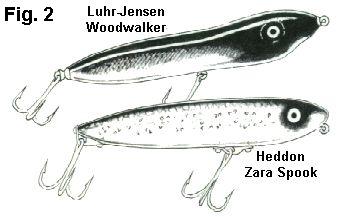 |
|
Written And Illustrated By BERNIE SCHULTZ
A magician with a stickbait, this pro makes his pet topwater lure do bass-attracting tricks...
The expression,"walking the dog,"
refers to the unique zigzag action associated with cigar-shaped topwater
plugs. Twitched properly, the lure slides from side to side during
the retrieve. Bass love the motion. |
specific action imparted by the angler, is what enables them to
sashay from side to side. |
Next, Campbell casts well
beyond the target. He prefers standing while fishing, and
he points the rod tip toward the water's surface. With slack
removed, he begins twitching the rod tip down and toward his
feet in short, rhythmic pulls. Each subsequent twitch should
be done on a slack line, using the wrist only. |
|
|
 |
|||
"You could almost do this better blindfolded," he suggests, "because
watching the lure can sometimes cause your cadence to become erratic.
Concentrate on twitching the rod tip," he adds. "When the sliding
lure forms slack in the line, you'll feel it, and that's when you
twitch again." |
cause the lure to glide in one direction. In this
instance, it is critical to watch the lure to make sure it's walking
the way you want it to, he says. |
|||
![]() Send e-mail to bernie@bernieschultzfishing.com with questions or comments about this web
site.
Send e-mail to bernie@bernieschultzfishing.com with questions or comments about this web
site.

